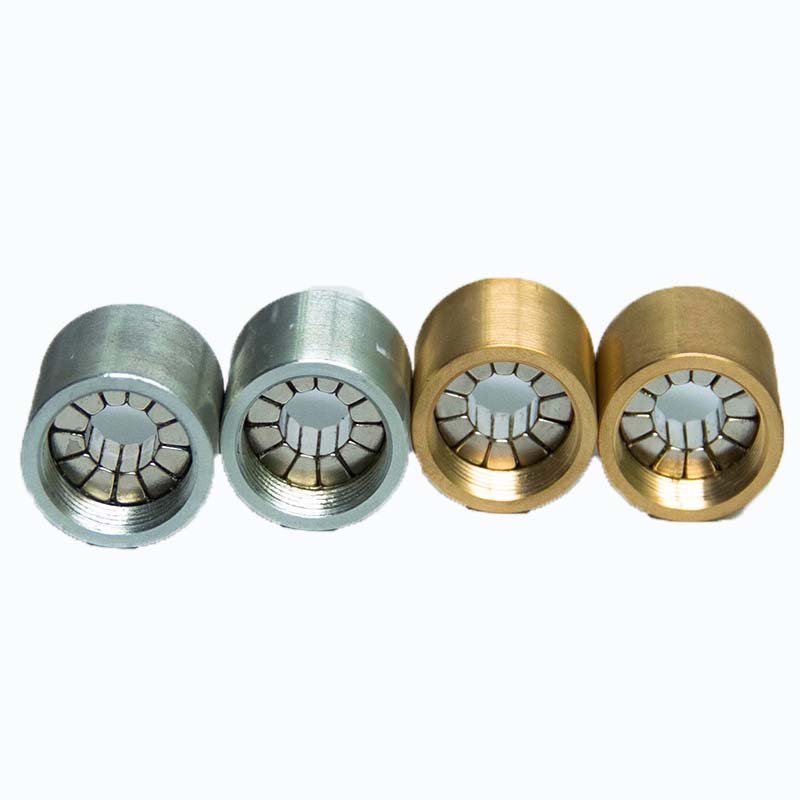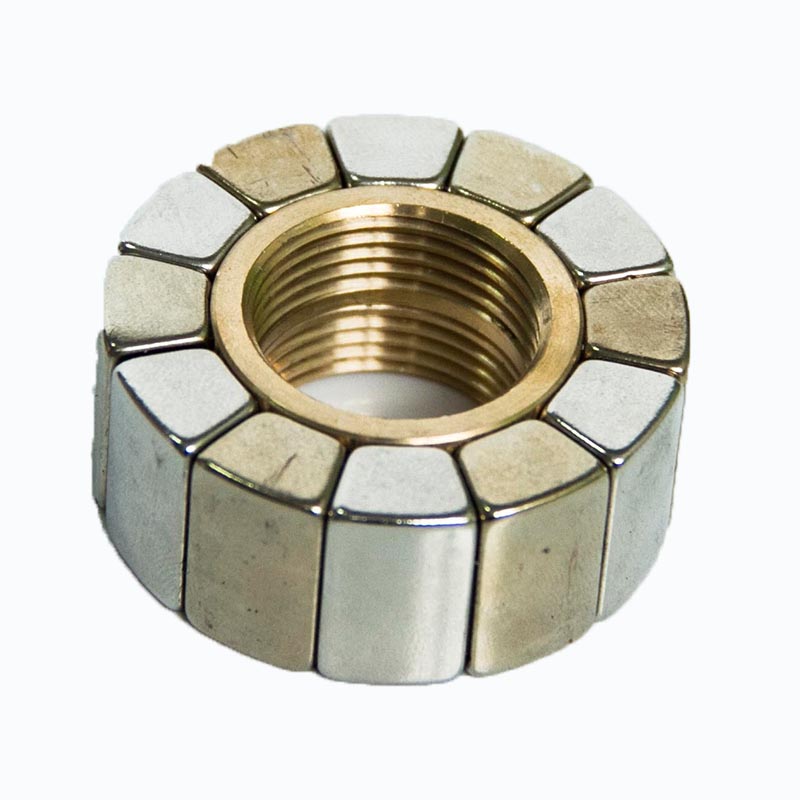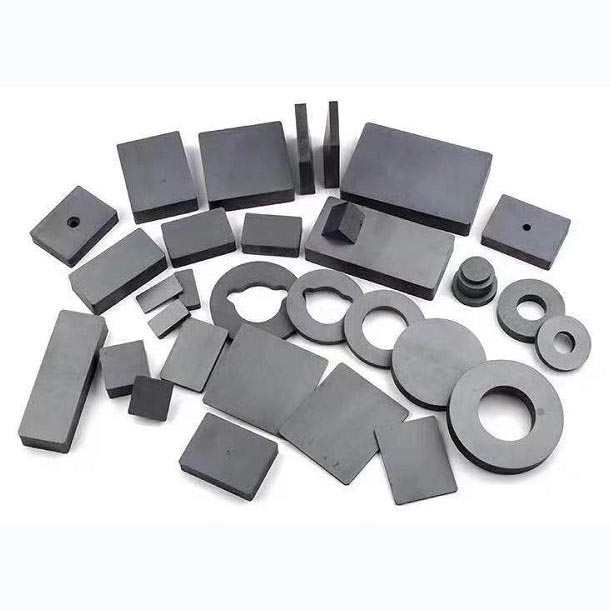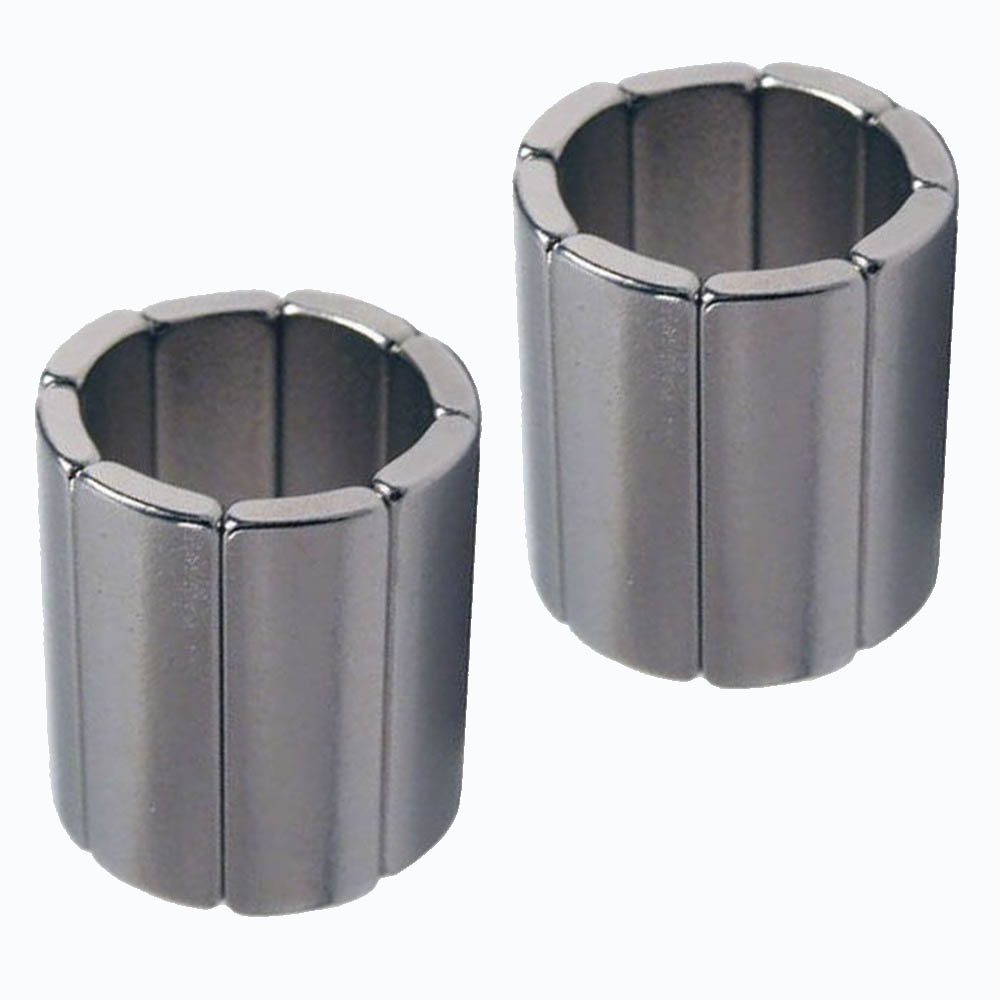Brushless Motor Magnet Assembly: Technology, Applications, and Maintenance
What is Brushless Motor Magnet Assembly?
The brushless motor magnet assembly is a critical component in brushless DC (BLDC) motors, consisting of permanent magnets arranged in a specific configuration on the rotor. This assembly typically uses high-grade rare-earth magnets like neodymium (NdFeB) or samarium-Cobalt (SmCo), mounted on a steel backing or embedded in the rotor structure. The magnet assembly works in conjunction with stator windings to convert electrical energy into mechanical motion through electromagnetic interaction, without requiring physical commutation brushes.
Key technical characteristics of modern brushless motor magnet assemblies:
Magnetic Flux Density: Ranges from 1.0 to 1.4 Tesla for NdFeB magnets, with high-performance grades reaching up to 1.6 Tesla
Coercive Force: Typically 800-2000 kA/m (10-25 kOe) for temperature-stable grades
Operating Temperature: Standard grades withstand 80-150°C, while high-temperature variants can operate at 200-220°C
Pole Count: Common configurations range from 4 to 48 poles, with 8-16 poles being most prevalent in industrial applications
Torque Density: Achieves 15-25 Nm/kg in high-performance designs, significantly surpassing brushed motor alternatives

Technical Features and Performance Data
Modern brushless motor magnet assemblies exhibit several advanced technical features that contribute to their superior performance. The magnetic material itself demonstrates exceptional energy product values, with NdFeB grades reaching 50-55 MGOe (398-440 kJ/m³), enabling compact motor designs with high power density. The assembly's geometric precision is crucial, with typical air gap tolerances maintained within 0.1-0.5 mm for optimal magnetic coupling.
Advanced magnetization patterns have been developed to improve performance characteristics. Sinusoidal magnetization can reduce torque ripple to less than 2% peak-to-peak, while Halbach array configurations can increase flux density on the working side by 30-40% compared to conventional arrangements. The mechanical integrity of these assemblies is equally important, with rotor surface speeds often exceeding 100 m/s in high-speed applications, requiring careful balancing to maintain vibration levels below 0.5 mm/s RMS.
Thermal management represents another critical aspect, as the magnets' magnetic properties are temperature-dependent. Modern assemblies incorporate thermal compensation designs that maintain flux stability within ±1.5% across the operating temperature range. Some high-reliability applications use bonded magnets with temperature coefficients as low as -0.08%/°C for improved thermal stability.
Application Scenarios
Brushless motor magnet assemblies find applications across diverse industries due to their efficiency, reliability, and precise control capabilities:
Aerospace and Defense: Flight control actuators (torque densities up to 30 Nm/kg), drone propulsion systems (efficiency exceeding 90%)
Electric Vehicles: Traction motors (power densities reaching 5 kW/kg), regenerative braking systems
Industrial Automation: CNC machine tools (positioning accuracy within ±1 arc-minute), robotic actuators
Medical Equipment: Surgical robots (low torque ripple below 1%), MRI scanner motors (non-magnetic versions)
Consumer Electronics: Hard disk drive spindles (rotational precision 0.001°), cooling fans (lifetimes exceeding 50,000 hours)
Renewable Energy: Wind turbine pitch control systems (withstanding -40°C to +80°C environments)
Maintenance Procedures
Proper maintenance of brushless motor magnet assemblies is essential for ensuring long-term performance and reliability. The following procedures should be implemented:
Regular Inspection: Conduct visual inspections every 500 operating hours or as specified by the manufacturer. Check for:
Physical damage to magnet surfaces (cracks, chips exceeding 0.5 mm depth)
Corrosion or oxidation (particularly important for non-coated magnets in humid environments)
Loose mounting (allowable movement should not exceed 0.05 mm radial displacement)
Thermal Monitoring: Implement continuous temperature monitoring for critical applications. Magnet temperatures should remain below:
80°C for standard NdFeB grades
150°C for high-temperature NdFeB
300°C for SmCo magnets
Cleaning Procedures: Use non-abrasive cleaning methods:
Compressed air (< 3 bar pressure)
Isopropyl alcohol (concentration > 90%) for stubborn contaminants
Avoid ultrasonic cleaning (risk of micro-crack formation at frequencies above 25 kHz)
Demagnetization Prevention: Protect assemblies from:
External magnetic fields exceeding 3 kOe for NdFeB
Mechanical shock above 50 g acceleration
Improper storage near ferromagnetic materials (maintain minimum 10 cm separation)
Bearing Maintenance: Since magnet assemblies are integral to the rotor, bearing condition directly affects performance:
Monitor vibration levels (should remain below 2.5 mm/s for most industrial applications)
Relubricate bearings per manufacturer specifications (typically every 2,000-5,000 hours)
Check axial play (should not exceed 0.1 mm for precision applications)
Storage Conditions: For spare assemblies or during motor downtime:
Maintain temperature between 15-25°C
Keep relative humidity below 60%
Use keeper plates for unmounted magnets (minimum thickness 5 mm mild steel)
Store in magnetically shielded containers if exposed to strong fields (> 100 Oe)




 English
English








